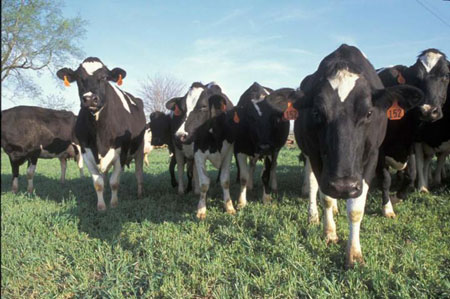



Weekly global protein digest: US dairy herd continues to decline
Read the latest US dairy industry updates from Jim Wyckoff.USDA report shows that consolidation in US dairy farming continues
US dairy farm closures have attracted widespread news coverage in recent years, according to a report issued by the US Department of Agriculture. Small and mid-sized dairy farms have been facing significant financial challenges.
During 2018, milk prices fell, and the gap between milk prices and feed costs narrowed. As a wave of farm closures in the industry hit many traditional dairy states in the Northeast and Midwest, the number of dairy farms licensed to sell milk fell by 15 percent between 2017 and 2019.
In response to these financial challenges, Congress expanded support for dairy farms in 2018, with a primary focus on smaller operations. In the Bipartisan Budget Act of 2018, and later in the 2018 Agriculture Improvement Act, Congress restructured premiums charged to farmers and extended coverage of a major federal dairy support programme, renamed the Dairy Margin Coverage (DMC), and made adjustments to other dairy-related programmes. These changes are expected to substantially increase federal expenditures in support of dairy producers.

This report details the continuing structural and geographic transformation of US dairy farming, identifies the financial and productive factors that have driven those structural and geographic shifts, and evaluates prospects for further consolidation.
The study found:
- In 1987, half of all milk cows in the United States were in herds of 80 or more, and half were in herds of 80 or fewer. Since that time, the midpoint size has risen consistently; by 2017, the midpoint was 1,300 cows. The pace of consolidation in dairy far exceeds the pace of consolidation seen in most of US agriculture.
- The 2017 Census of Agriculture counted 54,599 farms with milk cows. Of those farms, 30,373 were small commercial farms, with 10–199 cows. The number of small commercial dairy farms has fallen substantially over time, from 47,873 a decade before (in 2007), and 146,685 three decades before (in 1987).
- By 2017, nearly 2,000 farms had herds of at least 1,000 milk cows, and those farms milked over half of U.S. cows. Twenty-five years earlier, there were just over 500 such farms, and they milked less than 10 percent of cows. Over time, production has shifted toward much larger farms, often with 5,000 or more cows.
- There are powerful cost incentives behind farm consolidation. Larger dairy farms have substantially lower costs of production, on average, than smaller farms. This cost advantage appears to extend across a wide range of larger sizes, with farms with 2,000 cows realising lower costs than farms with 1,000 cows, which in turn realise lower costs than farms with 500 cows.
- Some farms in each size class are profitable. Although herd size is a powerful determinant of costs and returns, there is wide variation of costs and of net returns among farms, even within narrowly defined size classes. Weather, location, physical infrastructure, and management can each affect the financial performance of a dairy farm.
- Dairy farms that are certified organic showed higher net returns per hundredweight (cwt) than similarly sized conventional dairy farms in 2016. Organic operations with 100–199 cows and larger showed positive net returns on average, while only very large conventional operations of 2,000 or more cows showed positive net returns on average. However, there are significant costs associated with making a transition from conventional to organic production.
- Many farms with gross returns less than total costs will continue to operate if they are covering all non-capital costs, as their operators can earn a better living from dairy farming than from other pursuits. Dairy farm exit is therefore a gradual process, playing out over years, and so consolidation is also a gradual process.
- The number of licensed dairy herds fell by more than half between 2002 and 2019, and the rate of decline accelerated in 2018–2019, even as milk production continued to grow.
Consolidation will likely continue. Dairy finances still favour larger operations, and while there are fewer small commercial dairy farms today, many operators are approaching retirement age. Should the number of farms continue to decline at a rate of 4 percent per year, in line with past trends and a model developed in the report, then we should expect to count about 31,500 licensed dairy herds at the end of 2021, down from 34,187 in 2019.
Read the poultry meat outlook on The Poultry Site and analysis of the global hog industry on The Pig Site.
TheCattleSite News Desk
IMPORTANT NOTE: I am not a futures broker and do not manage any trading accounts other than my own personal account. It is my goal to point out to you potential trading opportunities. However, it is up to you to: (1) decide when and if you want to initiate any traders and (2) determine the size of any trades you may initiate. Any trades I discuss are hypothetical in nature.
Here is what the Commodity Futures Trading Commission (CFTC) has said about futures trading (and I agree 100%): 1. Trading commodity futures and options is not for everyone. IT IS A VOLATILE, COMPLEX AND RISKY BUSINESS. Before you invest any money in futures or options contracts, you should consider your financial experience, goals and financial resources, and know how much you can afford to lose above and beyond your initial payment to a broker. You should understand commodity futures and options contracts and your obligations in entering into those contracts. You should understand your exposure to risk and other aspects of trading by thoroughly reviewing the risk disclosure documents your broker is required to give you.



